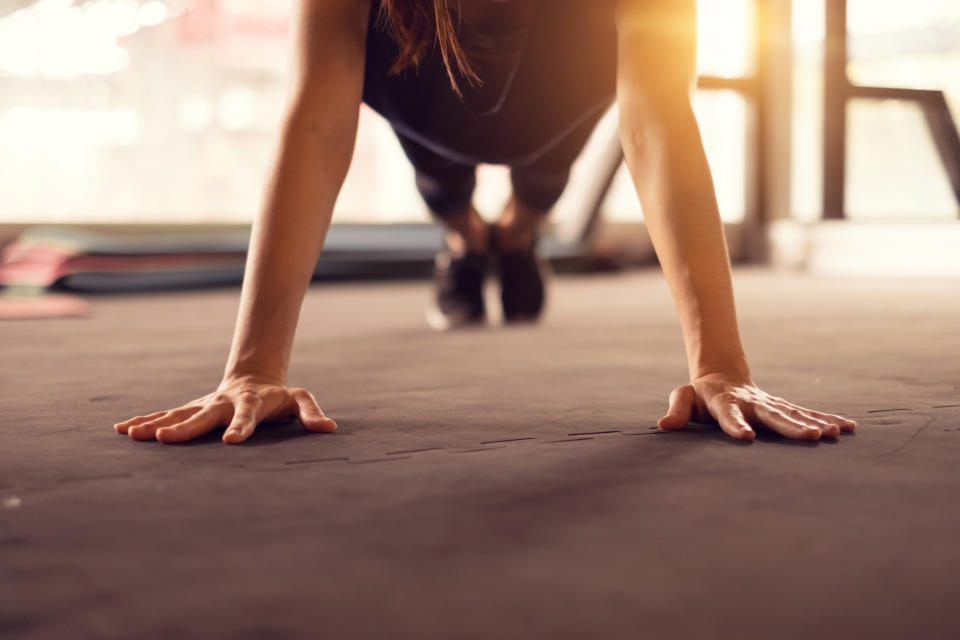New federal guidelines suggest 2.5 hours of exercise per week — which 80 percent of Americans don't do
“Move more, sit less” — that’s the motto the U.S. Department of Health and Human Services (HHS) has coined for its newest fitness guidelines, released Monday morning. The report, which calls exercise “critical for overall health,” marks the first update since the guidelines were first released in 2008.
Like the original report, this one offers tips and guidelines for the amount of exercise needed to live a balanced, healthy life, as well as provides a snapshot of how Americans measure up to the standards. We’ve waded through the report so you don’t have to — here’s what you need to know:
Adults need 2 1/2 hours of moderate exercise per week, at least.
The report suggests that adults get “at least two and a half hours” of “moderate-intensity aerobic physical activity” each week, which needs to be done in intervals at least 10 minutes long. Intervals that fall below 10 minutes, it says, don’t offer the same benefits. On top of this 150 minutes of aerobic exercise, the report says adults need to so “strengthening activities,” like pushups, sit-ups, and weight lifting, twice a week.
Kids need a minimum of 60 minutes of physical activity per day.
Similar to the 2008 report, this one suggests that kids get at least 60 minutes of exercise a day, ranging from moderate to vigorous aerobic physical activity. At least three times a week, kids should engage in vigorous-intensity physical activity, like running, jumping rope, swimming, or playing soccer. Since kids are still developing, they should also do “muscle strengthening” activities (such as weightlifting) and “bone-strengthening” activities (such as running) three times a week.

Gardening counts as exercising, as does walking briskly.
While the term “aerobic” may instantly produce images of running on a treadmill or moving on an elliptical, those aren’t the only activities that qualify. “Aerobic activities … include, but are not limited to: biking slowly, canoeing, ballroom dancing, general gardening, using your manual wheelchair, arm cycling, walking briskly, and water aerobics,” the report reads. “Examples of vigorous activities are basketball, jumping rope, running or bicycling on hills, soccer, swimming laps, and martial arts.”
The “talk test” can help clarify what type of exercise you’re doing.
If you’re unsure exactly what type of exercise you’re engaging in, HHS recommends doing something called the talk test. “If you can talk while you are active, then you are participating at a moderate level,” the report reads. “If you can only say a few words without stopping to catch your breath, then you are engaging in vigorous activity.”
Most Americans do not meet these guidelines — and the cost of that is huge.
According to the Centers for Disease Control and Prevention, over 33 percent of adults (and 17 percent of children) in America are considered obese. HHS suggests that one of the contributing factors to this obesity epidemic is lack of exercise. “Only 26 percent of men, 19 percent of women, and 20 percent of adolescents meet the recommendations,” HHS writes. “According to the guidelines, these low levels of physical activity among Americans have health and economic consequences for the nation, with nearly $117 billion dollars in annual healthcare costs and 10 percent of all premature mortality attributable to failure to meet levels of aerobic physical activity recommended in the guidelines.”
The good news: Exercise has both physical and mental benefits.
Although the numbers are grim, this report suggests that Americans can drastically improve their health by just starting to move. The results, if they do, could be huge. “Regular physical activity can help: prevent chronic diseases such as heart disease, cancer, and stroke (the three leading health-related causes of death), control weight, make your muscles stronger, and reduce fat,” the report reads. Exercise can also “improve sleep, decrease potential of becoming depressed, increase your energy and self-esteem, and relieve stress,” the report says.
When in doubt, just “move.”
Admiral Brett P. Giroir, MD, assistant secretary for health at HHS, concludes the report with a rallying cry. “The new guidelines demonstrate that, based on the best science, everyone can dramatically improve their health just by moving — anytime, anywhere, and by any means that gets you active,” he writes in the report’s purpose statement. “That’s why we need to come together as a nation to get Americans moving. When we move more, we have better cardiovascular health, we are stronger and less susceptible to disease, and we feel better.”
Read more from Yahoo Lifestyle:
Why surgery for a pectoral tear? WWE fighter Triple H is recovering after chest injury
Michael B. Jordan’s trainer shares the secrets they used to get him ready for ‘Creed II’
Science says a hot soak can lift your mood — here are 5 bath products to try now
Follow us on Instagram, Facebook, and Twitter for nonstop inspiration delivered fresh to your feed, every day.

